It’s been another week in quarantine, and for a rising number of U.S. adults, that means another week of delivery. This week, 33% of respondents report using food delivery more due to the spread of the novel coronavirus. This number is up 32% from last week, a noticeable jump after two weeks of holding steady at around 23%. 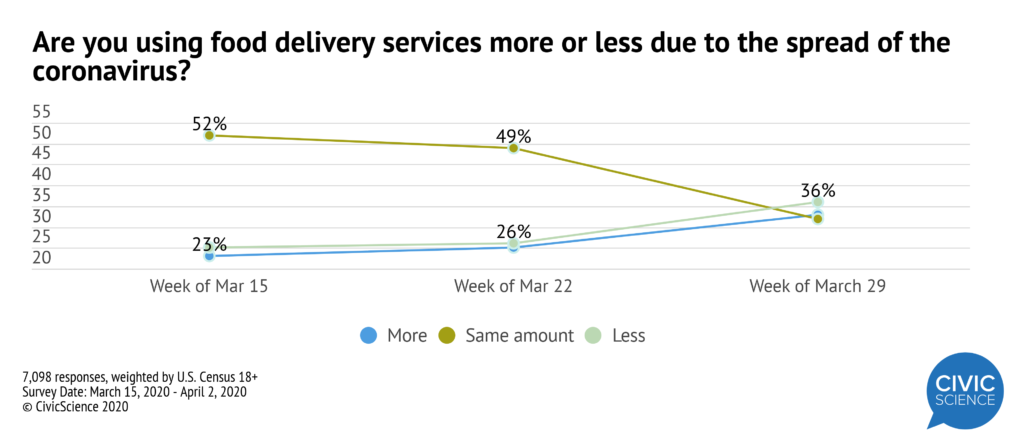
Last week, the data revealed that both those who were more concerned and less concerned about being in public places were using delivery services more than people who were just somewhat concerned. However, that has shifted: As it stands, those who are using food delivery services less say they are “very concerned” about being in public spaces at the highest rate. This suggests that, for many, even interacting with a delivery person may feel like too much of a risk.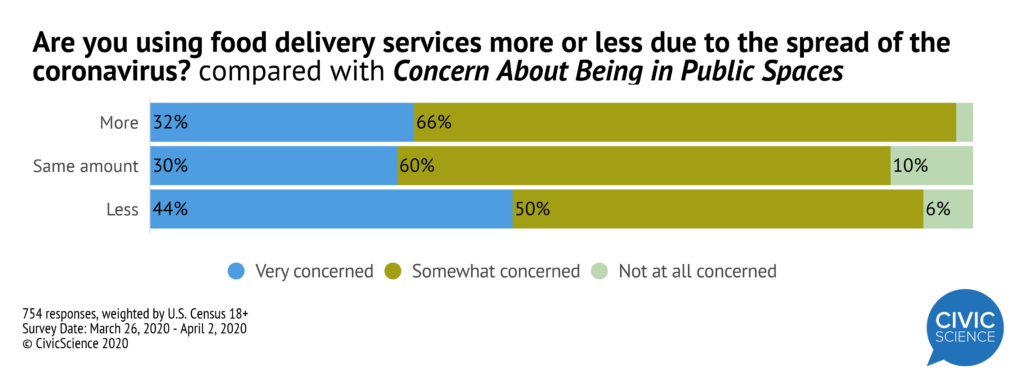 Notably, even those who are using delivery services the same amount have a higher level of concern over public spaces this week (30%), as opposed to last week (11%). Simply put, it seems that concern is elevated across all demographics.
Notably, even those who are using delivery services the same amount have a higher level of concern over public spaces this week (30%), as opposed to last week (11%). Simply put, it seems that concern is elevated across all demographics.
WFH and Food Delivery Go Hand-in-Hand
For those willing to take the risk, food delivery continues to offer the convenience of not needing to cook–an appealing thought for some. This is especially true for those who are working as usual or more, but remotely. This group makes up the largest demographic of consumers turning to delivery even more.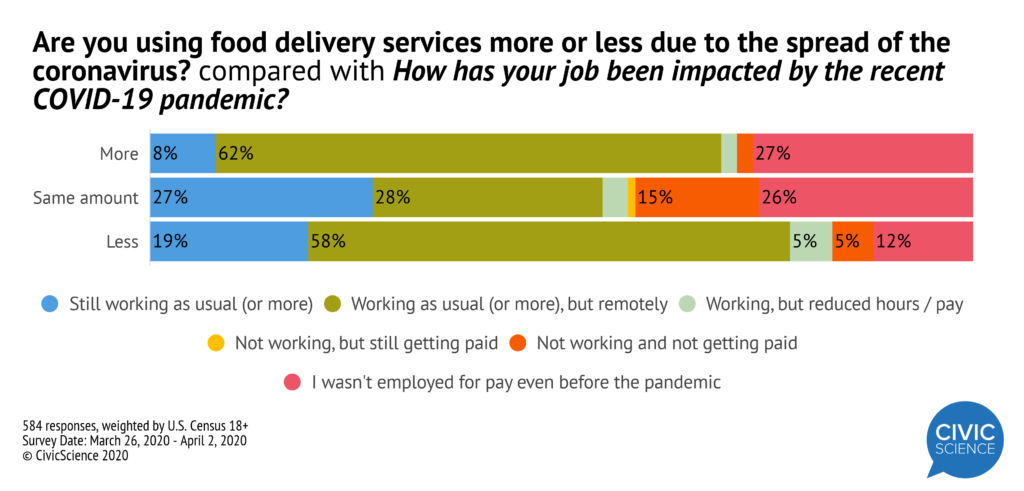 And, as it turns out, frequency of food delivery doesn’t mean there is no food in the house. In fact, those who are using food delivery services more this week say they have already stocked up on food. This suggests that those who can afford to stock their shelves can also afford the convenience of a meal delivered.
And, as it turns out, frequency of food delivery doesn’t mean there is no food in the house. In fact, those who are using food delivery services more this week say they have already stocked up on food. This suggests that those who can afford to stock their shelves can also afford the convenience of a meal delivered. 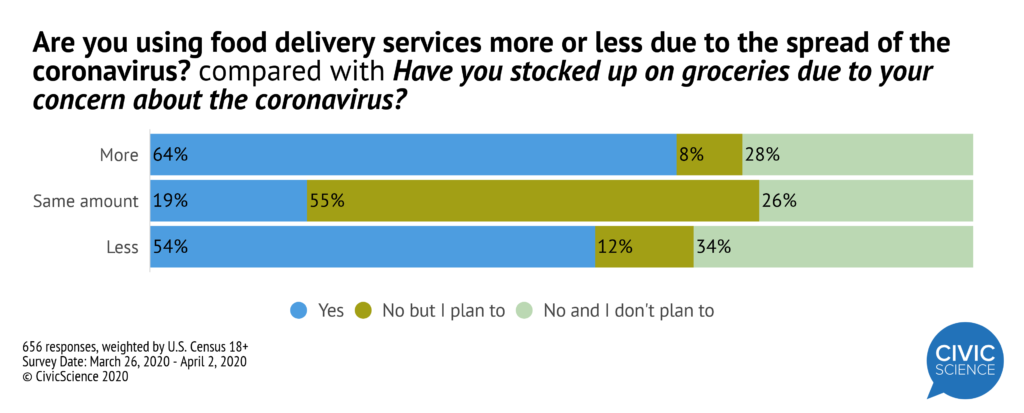
Food Delivery Apps Hold Steady
This week, usage of food delivery apps is similar to where it stood last week. Users are now at 81%, non-users at 19%. This is just a 2 percentage point shift up and down for users and non-users respectively.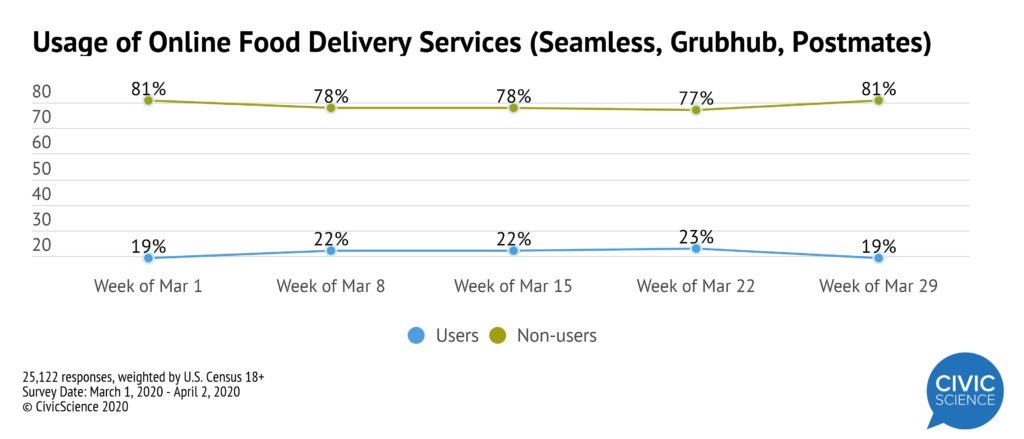 Those aged 25-34 years old are the largest group making use of these apps. That said, usage does skew younger in general.
Those aged 25-34 years old are the largest group making use of these apps. That said, usage does skew younger in general.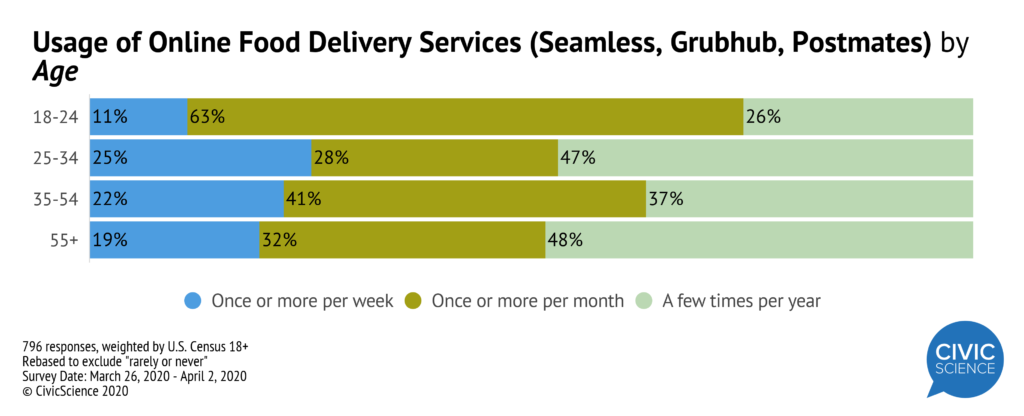
Tipping Still on the Rise
And yet again, tip rates have jumped. Now, 74% of U.S. adults are tipping their food delivery drivers more, which is up from 64% just a week ago. As the virus spreads, it seems that these essential workers who make it possible for others to shelter in place are becoming increasingly valued.
While there were big increases in tipping across the board, the data show a particularly large jump among the youngest adults. Seventy-two percent of Gen Z now say they are tipping drivers more, up from 57% last week. Additionally, the gap between all other age groups continues to decrease.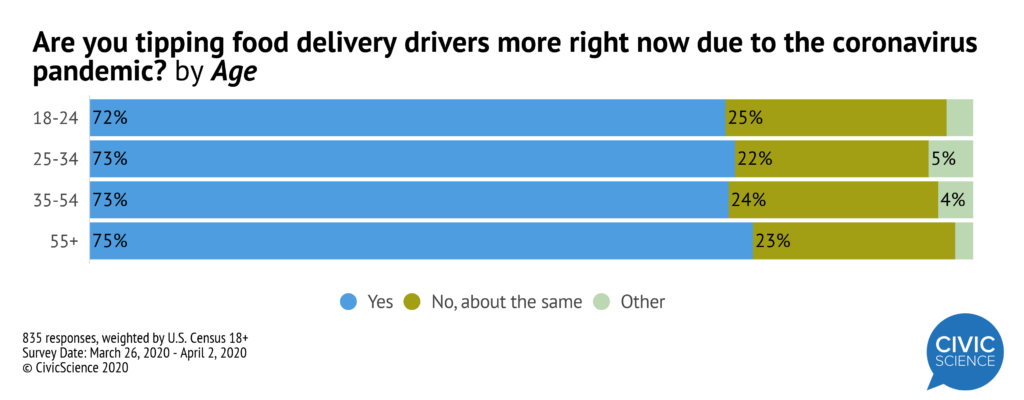 As people become more concerned about the spread of COVID-19, any service that fulfills a need without requiring a trip out of the house could become a more sought after luxury. The trend CivicScience is seeing within food delivery is the line between convenience and cost. Those using delivery more right now seem to show signs of privilege: higher income correlated with higher levels of food delivery usage and fully stocked pantries. At the same time, lower earning households aren’t too far behind in how much they order out, despite additional fees. It appears that the luxury of delivery is becoming more democratized, and the spread of the coronavirus might make certain services originally thought of as extreme measures less extreme and more commonplace or standard when the dust settles.
As people become more concerned about the spread of COVID-19, any service that fulfills a need without requiring a trip out of the house could become a more sought after luxury. The trend CivicScience is seeing within food delivery is the line between convenience and cost. Those using delivery more right now seem to show signs of privilege: higher income correlated with higher levels of food delivery usage and fully stocked pantries. At the same time, lower earning households aren’t too far behind in how much they order out, despite additional fees. It appears that the luxury of delivery is becoming more democratized, and the spread of the coronavirus might make certain services originally thought of as extreme measures less extreme and more commonplace or standard when the dust settles.








